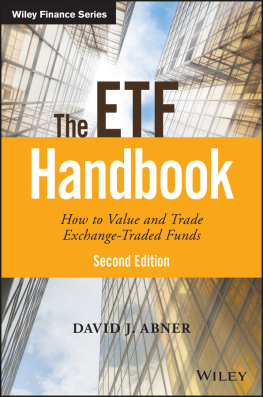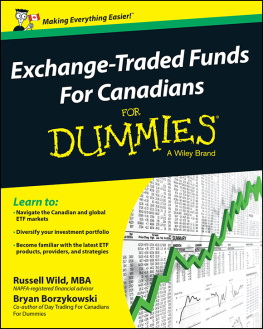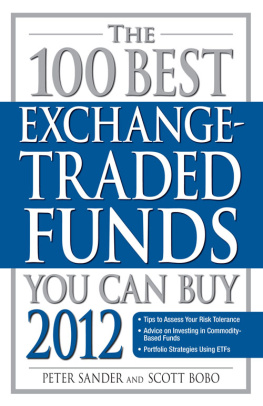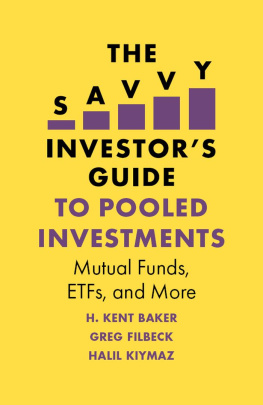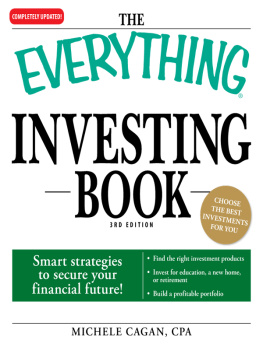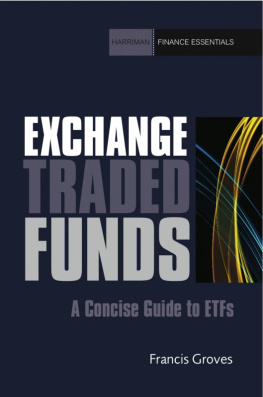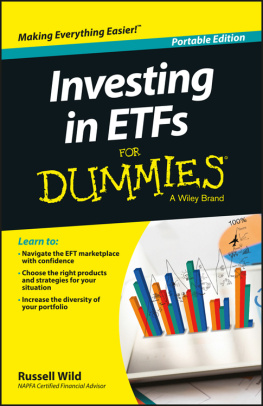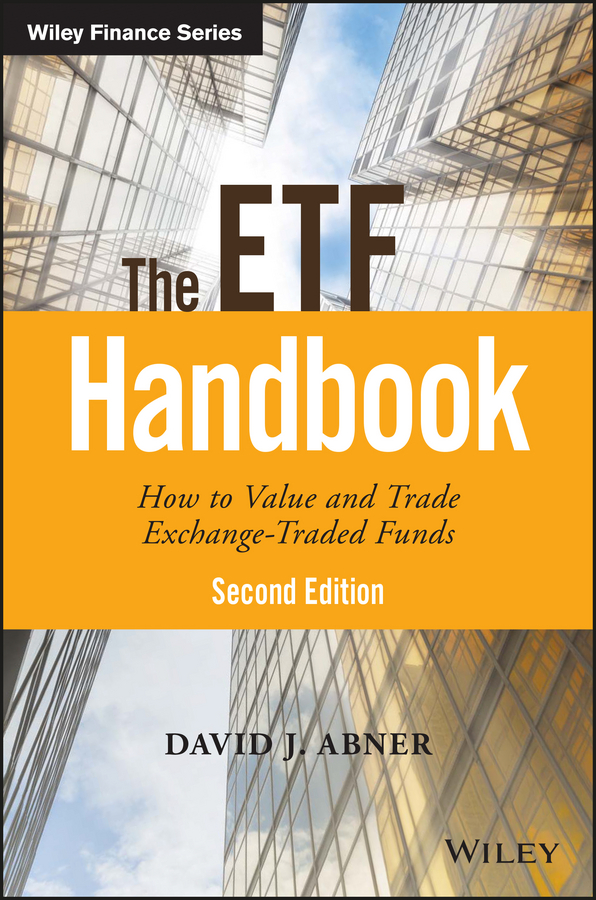
The Wiley Finance series contains books written specifically for finance and investment professionals as well as sophisticated individual investors and their financial advisors. Book topics range from portfolio management to e-commerce, risk management, financial engineering, valuation and financialinstrument analysis, as well as much more. For a list of available titles, visit our Web site at www.WileyFinance.com.
Founded in 1807, JohnWiley & Sons is the oldest independent publishing company in the United States. With offices in North America, Europe, Australia and Asia, Wiley is globally committed to developing and marketing print and electronic products and services for our customers' professional and personal knowledge and understanding.
Copyright 2016 by David J. Abner. All rights reserved.
Published by John Wiley & Sons, Inc., Hoboken, New Jersey.
Published simultaneously in Canada.
No part of this publication may be reproduced, stored in a retrieval system, or transmitted in any form or by any means, electronic, mechanical, photocopying, recording, scanning, or otherwise, except as permitted under Section 107 or 108 of the 1976 United States Copyright Act, without either the prior written permission of the Publisher, or authorization through payment of the appropriate per-copy fee to the Copyright Clearance Center, Inc., 222 Rosewood Drive, Danvers, MA 01923, (978) 750-8400, fax (978) 646-8600, or on the Web at www.copyright.com. Requests to the Publisher for permission should be addressed to the Permissions Department, John Wiley & Sons, Inc., 111 River Street, Hoboken, NJ 07030, (201) 748-6011, fax (201) 748-6008, or online at http://www.wiley.com/go/permissions.
Limit of Liability/Disclaimer of Warranty: While the publisher and author have used their best efforts in preparing this book, they make no representations or warranties with respect to the accuracy or completeness of the contents of this book and specifically disclaim any implied warranties of merchantability or fitness for a particular purpose. No warranty may be created or extended by sales representatives or written sales materials. The advice and strategies contained herein may not be suitable for your situation. You should consult with a professional where appropriate. Neither the publisher nor author shall be liable for any loss of profit or any other commercial damages, including but not limited to special, incidental, consequential, or other damages.
For general information on our other products and services or for technical support, please contact our Customer Care Department within the United States at (800) 762-2974, outside the United States at (317) 572-3993 or fax (317) 572-4002.
Wiley publishes in a variety of print and electronic formats and by print-on-demand. Some material included with standard print versions of this book may not be included in e-books or in print-on-demand. If this book refers to media such as a CD or DVD that is not included in the version you purchased, you may download this material at http://booksupport.wiley.com. For more information about Wiley products, visit www.wiley.com.
Library of Congress Cataloging-in-Publication Data:
Names: Abner, David J., 1969- author.
Title: The ETF handbook : how to value and trade exchange-traded funds / David J. Abner.
Other titles: Wiley finance series.
Description: Second edition. | Hoboken, New Jersey : John Wiley & Sons, 2016. | Series: Wiley finance series Identifiers: LCCN 2016017302 (print) | LCCN 2016020692 (ebook) | ISBN 9781119193906 (cloth) | ISBN 9781119193791 (ePDF) | ISBN 9781119193913 (ePub)
Subjects: LCSH: Exchange traded funds.
Classification: LCC HG6043 .A26 2016 (print) | LCC HG6043 (ebook) | DDC
332.63/27dc23
LC record available at https://lccn.loc.gov/2016017302
Cover Design: Wiley
Cover Image: Lee Yiu Tung/Shutterstock
For Mom and Dad
Preface
The number of available exchange-traded funds (ETFs) and the quantity of assets underlying them has been growing exponentially in recent years. For the future growth of the industry it is important for new users of these products to understand how to execute trades in the broad range of ETFs. Educating a new and expanding client base has become a universal endeavor among ETF issuers. Even the largest ETF providers in the industry have products that do not trade the high volumes of the few most popular products. In order for the client base to utilize the broader range of available products, it needs to understand how efficient executions are achieved. Understanding the proper methods of valuing and trading ETFs will enable investors to expand their product usage. It will enable the trading community to provide the services necessary to nurture the future growth of this young industry. The ETF Handbook presents both the tools necessary for valuing these funds and the concepts required for trading and executing ETF order flow. This information is important for traders and for the investor base.
ETFs IN THE REAL WORLD
Recently I encountered two examples that clearly demonstrate the need for this information. In the first, I received a call from a client seeking help in executing ETF order flow. The client's initial comments were: I've been trying to buy two of your ETFs and the intraday volume is very light. I have been bidding for the shares for about a week, and I haven't been getting any executions. Can you help me? This was not the first time I had heard this request. The adoption of the ETF product by an expanding user base has created a flood of such client calls to product issuers. I have been dealing with similar inquiries for the past 15 years. In the early years, the questions involved helping the new product adopters, primarily institutions and hedge funds, to achieve desired liquidity.
Lately, I have found myself in the role of champion of the smaller investor, helping advisors and our broader client base to achieve their desired executions in a more complete suite of ETFs. First, I attempt to understand what the clients have been doing so far and what their investment goals are. In this case, the client was an advisor trying to buy 50,000 shares each of two of our ETFs that each trade approximately 15,000 shares daily. The typical market that would be quoted on the ETFs is roughly 10 cents wide with approximately 500 shares on either side of the market. Without a solid understanding of how the ETF market works, one might think this would be a multiday trading adventure or, worse, a hopeless situation. It is far from that, however, and I was able to help the client achieve a very satisfactory execution. I learned that the client was placing very small limit orders on the bid side of the market. Then, every time the market started moving down, he would lower his order price. By doing this, he never let liquidity providers see any real size to buy in the ETFs; and he never let his order get near the value of the ETF, where opposing liquidity would be provided. This is the same as setting out in a boat to go fishing but never actually dropping a line in the water with a hook and some bait. You may be out fishing, but you will not catch any fish!
The client and I then had a conversation about his investment goals. I explained to him how the valuation of an ETF is determined. I explained that, in a low-volume ETF, most of the trading will take place against a liquidity provider. It is important to let the provider know you are willing to trade at a price close to the ETF value for the provider to be willing to offer the desired liquidity. With that understanding in mind, we calculated that the fair value for each of the ETFs was approximately three cents inside the offer side of the market at the time. So we did something that seemed very radical to the client: We decided to show our whole hand electronically. Instead of bidding for just 500 shares at a time, the client put a bid in each ETF into the system for all 50,000 shares at the price he was willing to pay that was in line with the valuation of the ETF.
Next page
